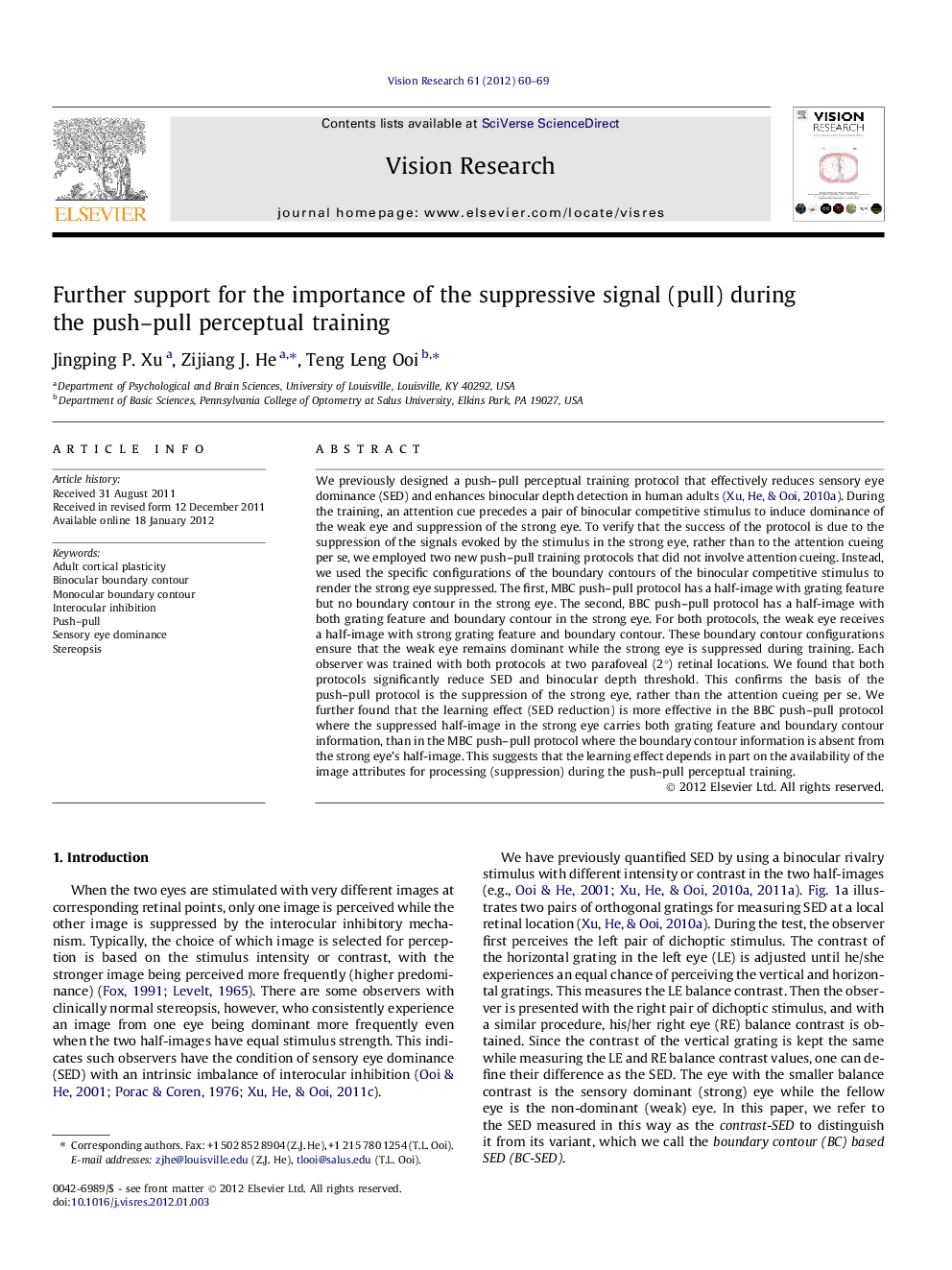| Article ID | Journal | Published Year | Pages | File Type |
|---|---|---|---|---|
| 4034008 | Vision Research | 2012 | 10 Pages |
We previously designed a push–pull perceptual training protocol that effectively reduces sensory eye dominance (SED) and enhances binocular depth detection in human adults (Xu, He, & Ooi, 2010a). During the training, an attention cue precedes a pair of binocular competitive stimulus to induce dominance of the weak eye and suppression of the strong eye. To verify that the success of the protocol is due to the suppression of the signals evoked by the stimulus in the strong eye, rather than to the attention cueing per se, we employed two new push–pull training protocols that did not involve attention cueing. Instead, we used the specific configurations of the boundary contours of the binocular competitive stimulus to render the strong eye suppressed. The first, MBC push–pull protocol has a half-image with grating feature but no boundary contour in the strong eye. The second, BBC push–pull protocol has a half-image with both grating feature and boundary contour in the strong eye. For both protocols, the weak eye receives a half-image with strong grating feature and boundary contour. These boundary contour configurations ensure that the weak eye remains dominant while the strong eye is suppressed during training. Each observer was trained with both protocols at two parafoveal (2°) retinal locations. We found that both protocols significantly reduce SED and binocular depth threshold. This confirms the basis of the push–pull protocol is the suppression of the strong eye, rather than the attention cueing per se. We further found that the learning effect (SED reduction) is more effective in the BBC push–pull protocol where the suppressed half-image in the strong eye carries both grating feature and boundary contour information, than in the MBC push–pull protocol where the boundary contour information is absent from the strong eye’s half-image. This suggests that the learning effect depends in part on the availability of the image attributes for processing (suppression) during the push–pull perceptual training.
► A push–pull training protocol with an attention cue reduces sensory eye dominance. ► The present study uses two new push–pull training protocols without attention cue. ► Both protocols have strong boundary contour and feature contents in the weak eye. ► Sensory eye dominance and stereo threshold are effectively reduced after training. ► Suppressive signals to the strong eye during the push–pull training causes learning.
